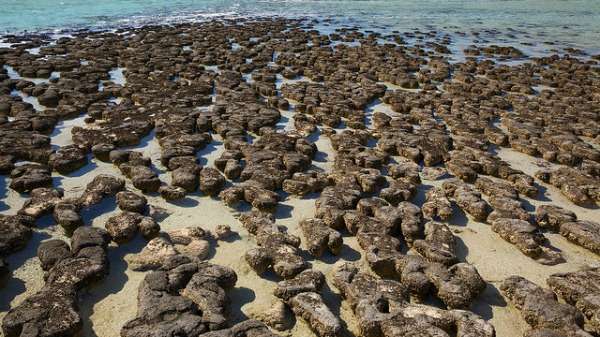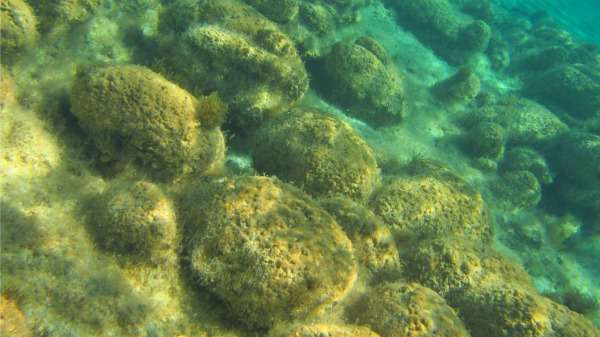Unlocking the secrets of Shark Bay's stromatolites

Look at the world-renowned stromatolites protruding from saline seas at Hamelin Pool in Shark Bay and you could be forgiven for wondering what all the fuss is about.
They appear as strange-shaped columns of rock—a mere oddity. Yet this mundane appearance belies a fascinating structure whose fossilised remains hold records to the earliest life on Earth.
They not only provide a picture into life billions of years ago, the microbes which created them generated the oxygen that went on to help make the planet habitable to human life.
Despite their importance to our very existence, and many years of research, much about stromatolites remains disputed.
But Bush Heritage science development fellow Erica Suosaari is determined to unlock more of their secrets via research which has transformed the way we understand the modern stromatolites at Shark Bay.
By conducting such research, Dr Suosaari has categorised the stromatolites into different morphological types—some never before recorded—and mapped them into eight distinct provinces.
Understanding how the local environment affects stromatolite morphology will help scientists interpret the ancient stromatolite structures so prevalent throughout the rock record, Dr Suosaari says.

"It has been argued that modern stromatolites cannot be compared to ancient stromatolites because of the grainy internal fabrics, built primarily by cyanobacterial trapping and binding of sediment grains, whereas ancient structures are typically comprised of frameworks of microbially induced cements," she says.
"But intense analyses of internal fabrics from Hamelin Pool stromatolites have uncovered mineral precipitation as a key constructional component, a feature shared with Precambrian (600+ million years ago) stromatolites that date back three billion years."
Furthermore, the research determined the stromatolite-building microbial mats of Hamelin Pool are dominated by Entophysalis, with lineage to an ancient microbe Eoentophysalis, that had a hand in building stromatolites billions of years ago.
Dr Suosaari and her colleagues carried out their research by collecting samples from 45 stromatolites for microscopic and molecular analyses to work out how Shark Bay stromatolites formed.
Additionally, in collaboration with NASA Ames, they collected and analysed aerial images of the stromatolites captured via a drone.
The images were created using a specially adapted technology which provided pictures of stromatolites in extreme detail, without interference by water movement.
Dr Suosaari's work demonstrates that modern day stromatolites are a truly fascinating window to ancient Precambrian times.
Provided by Science Network WA
This article first appeared on ScienceNetwork Western Australia a science news website based at Scitech.



















